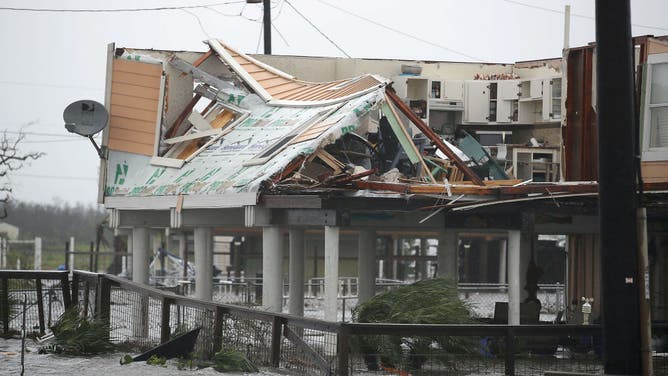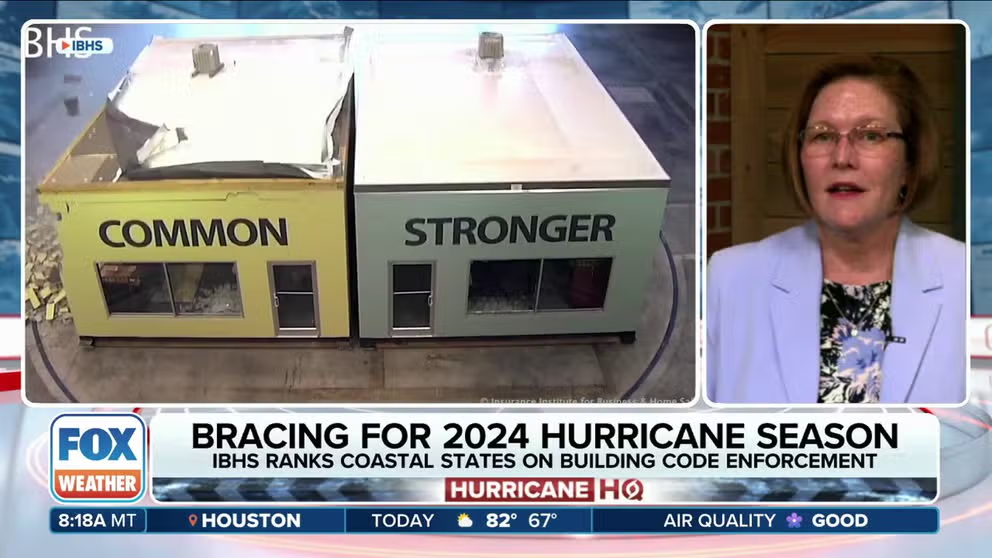Texas, Alabama score poorly in report ranking home resilience in hurricane-prone zones while Florida shines
Insurance experts say enacting stringent building standards can prevent billions of dollars in property damage during natural disasters. Despite progress, the IBHS says less than 35% of Americans reside in communities with sufficient building codes.
Which hurricane-vulnerable states top the list for best building code enforcement
The triennial report from the IBHS ranks Virginia and Florida among the best states for building code enforcement while Alabama and Delaware have work to do.
A nonprofit scientific research group has released its triennial report on the state of resilience in hurricane-prone communities, shedding light on the progress made and vulnerabilities that make properties susceptible to natural disasters.
According to the report issued by the Insurance Institute for Business & Home Safety (IBHS), Virginia and Florida ranked among the top states for resilience efforts, while Delaware and Alabama had the lowest scores.
The high scores were credited to improving training programs for code enforcement and requiring licensing and continuing education of tradesmen.
"We're looking for people to adopt building codes statewide, make sure they're used in force, and to make sure that the contractor that shows up at your doorstep knows what they're doing," IBHS Chief Engineer Dr. Anne Cope told FOX Weather.
IBHS ranked each coastal state on a 100-point scale based on factors such as code regulations, enforcement and contractor requirements. But many areas don't even have a building code.
"If you walk around in the street of your local hometown, you ask people, ‘Do we have a nationwide building code?’ People are probably going to mistakenly say, yes," Cope said. "We do not have nationwide building codes here in the United States. Less than a third of people actually live in a place that has a building code. So find out – go to Inspect To Protect, type in your address and see if you have a building code. If you live in the state of Texas, the odds are you don't."
CSU HURRICANE OUTLOOK SHOWS WHICH STATES COULD BE THREATENED IN 2024

Insurance Institute for Business & Home Safety (IBHS) ranking by building code adoption and enforcement.
(Insurance Institute for Business & Home Safety (IBHS) / FOX Weather)
Signs of improvement in Louisiana
But the odds are good if you live in the top two performers of Virginia and Florida.
"(Virginia) is top in the class because they've adopted and are enforcing the modern building code," Cope said. "They're making sure that contractors have licensing and are taking continuing education. So all the pieces are there. It's been fun to watch Virginia and Florida … These two states have been at the top of the states for a number of years now. This time, Virginia edged Florida out."
Cope said there are encouraging signs in some of the other states.
"We see great moves out of Louisiana. They have really adopted building codes and started using them and are off to a great start," Cope said. "They also have a grant program that they just set up in the state to get those buildings that are not currently to a strong code to have better roofs. So we love to see the work that's going on there in the state of Louisiana."
Among the lowest-rated states, the group found roofing contractors that were not required to be licensed and ineffective code enforcement programs.
Alabama finished only ahead of Delaware for last place, but Cope said while Alabama as a whole state scored poorly, there were bright spots.
"The two counties that are down there on the Gulf (of Mexico) – those two counties are doing the right thing, adopting building codes and enforcing them," Cope said. "I wish the rest of the state of Alabama would follow suit."
The state with the largest score drop was North Carolina, whose rating dropped three points compared to 2021's report.
"Legislation passed through a veto-override placed a moratorium on new building code adoption through 2031," the report stated. "This action, coupled with weakening opening protection provisions, cost the state three points."
Billions saved in Florida
Insurance experts estimated that enhanced commitments in construction saved Southwest Florida between $1 and $3 billion in additional damage during Hurricane Ian.

FILE - ROCKPORT, TX - AUGUST 26: A damaged home is seen after Hurricane Harvey passed through on August 26, 2017, in Rockport, Texas.
(Joe Raedle / Getty Images)
Hurricane Ian made landfall along Florida’s Gulf Coast as a Category 4 cyclone in September 2022 with maximum sustained winds of 150 mph.
NOAA estimated at the time that damage was around $113 billion, making Ian the third-costliest cyclone in recent history.
IMPACTFUL HURRICANE, WILDFIRE SEASONS EXPECTED TO LEAD TO SPIKE IN HOME INSURANCE RATES
Despite Florida’s second-place rating by IBHS, dozens of insurance providers have left the Sunshine State, causing a crisis for residents.
Six of the 10 most expensive cities for homeowners insurance are along the state’s coastline, with Hialeah and Miami topping the list of communities with the highest premiums.
The IBHS report did not address issues that disaster-prone areas are experiencing with insurance coverage but stressed the results were not intended for underwriting or regulatory purposes.
